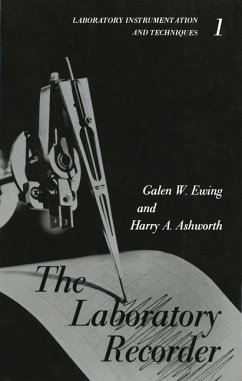One of the most universal functions of any scientific or engineer ing laboratory is the gathering of data to provide answers to immediate questions or information to be filed for future refer ence. Such data gathering may be achieved in various ways, depending on the nature and quantity of the information. The most prevalent of such data gathering methods is undoubtedly analog recording. Electrical analog recorders are available in a variety of sizes, speeds, sensitivities, and prices. They are suitable for recording any signal which is in, or can be converted to, electrical form. These recorders are found in every modern laboratory. Without them the importance of many functional relations would be missed altogether. How could one adequately diagnose a heart ailment without a cardiographic recorder, or obtain infrared or magnetic resonance spectra on any practicable basis without a strip-chart recorder? True, various curves that are now traced automatically with a recorder can beplotted manually from point-by-point measure ments. This procedure, however, is not only time-consuming, but may cause valid bits of information to be overlooked entirely, simply because the points were taken too far apart. Another factor favoring the use of recorders is the ability to pinpoint faulty operation of the data-gathering system. Artifacts that might not be observable at all in point-by-point observations 1 The Laboratory Recorder 2 will often be readily identifiable on a recording. Asymmetry of a peaked curve, for example, is only dearly evident in a recording.
Hinweis: Dieser Artikel kann nur an eine deutsche Lieferadresse ausgeliefert werden.
Hinweis: Dieser Artikel kann nur an eine deutsche Lieferadresse ausgeliefert werden.








